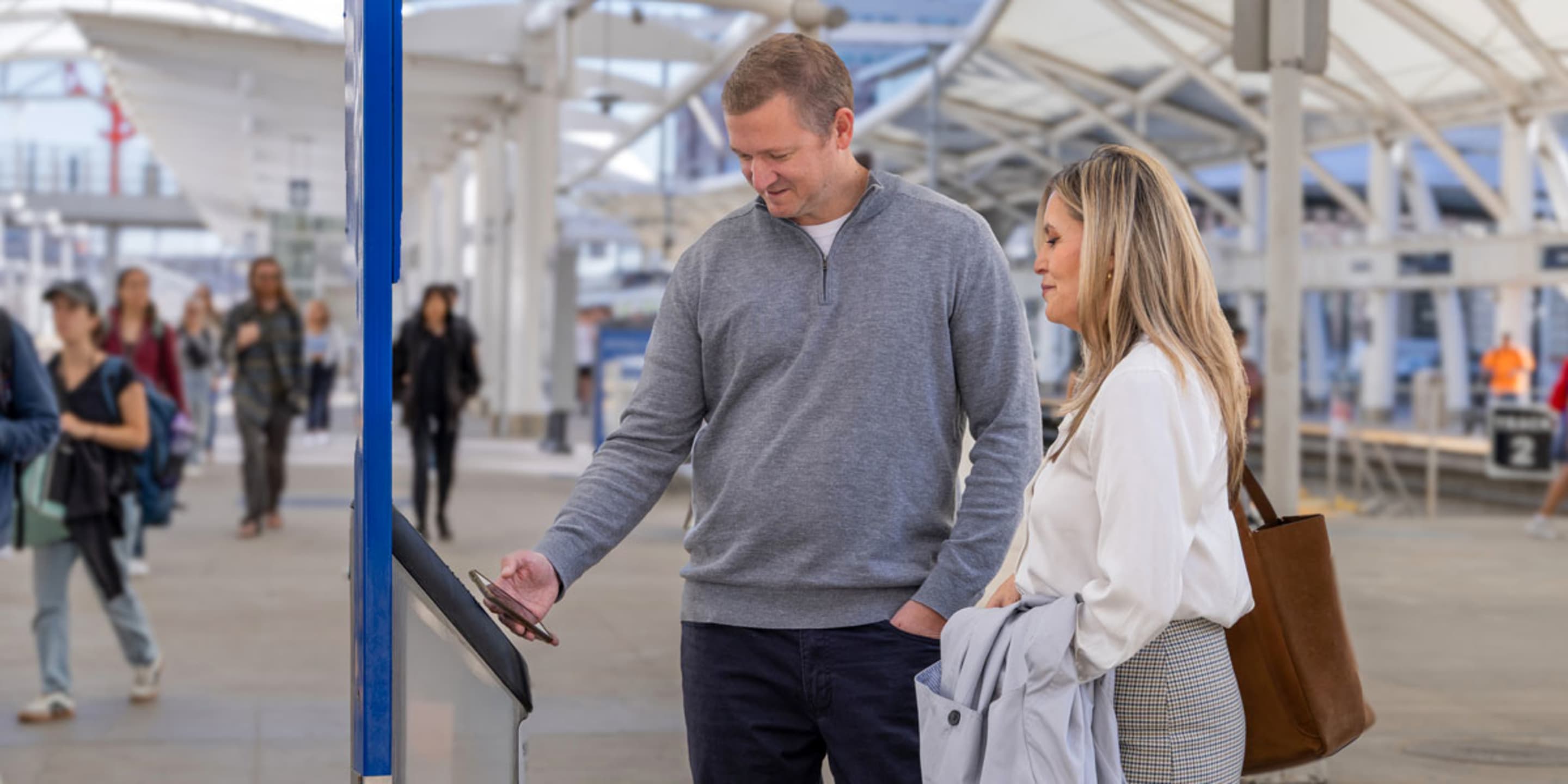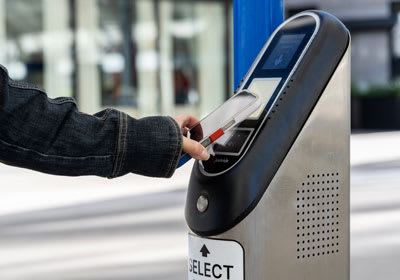
RTD introduces Tap-n-Ride for convenient fare payment on the go
DENVER (Nov. 25, 2025) –– The Regional Transportation District (RTD) is introducing Tap-n-Ride, a new fare payment option that provides a quick, secure, and convenient way for customers to pay their fare at any validator. Customers simply need to tap a Visa or Mastercard credit, debit, or prepaid card – or use a Visa or Mastercard loaded into a mobile wallet– directly on a bus or rail validator and ride. Mobile wallet payment options include Apple Pay, Google Pay, and Samsung Pay, and are available in a mobile phone or smart watch. RTD plans to add American Express and Discover card options to its Tap-n-Ride program in early 2026.
With Tap-n-Ride, customers can forgo using a ticket vending machine (TVM), having cash on hand, visiting a sales outlet, buying a mobile ticket, or preloading fare into their MyRide account. While all other existing fare payment methods will remain available for customers, Tap-n-Ride provides an additional, convenient fare payment option. Tap-n-Ride functions similarly to the agency’s MyRide card process.
“The introduction of Tap-n-Ride provides an experience that is easy to navigate, equitable, and accessible for everyone who relies on RTD,” said Debra A. Johnson, RTD’s General Manager and CEO. “This new fare payment option is focused on removing barriers and offering customers a seamless, straightforward experience where they can simply tap and ride. With fare capping available, customers can feel confident they’re always getting the best fare on each and every trip.”

How Tap-n-Ride works
Tap-n-Ride payments made on RTD’s bus and rail validators are processed through a certified and secure open payment system, and the transaction is made without storing card numbers.
MyRide account benefits
A benefit of linking a credit, debit or prepaid card to one’s MyRide account is the ability for customers to view their trip history and cumulative charges per day in the account. Customers who do not use a MyRide account can view aggregate charges for their fare purchases on their bank statement. Those eligible for fare discounts, such as through the agency’s LiVE income-based fare discount program, may link their credit or debit card to their RTD MyRide account in order to add the discount to their card token, and continue to pay discounted fare via Tap-n-Ride. RTD Customer Care can assist with adding a discount if a MyRide account is not used.
Dedicate one card or device for Tap-n-Ride
Tap-n-Ride limits purchases to one card or mobile wallet per customer to enable transfers and fare capping, ensuring customers always pay the lowest possible fare. For example, customers using the same credit or debit card or mobile wallet are charged only once in a three-hour window for a 3-Hour Pass, allowing unlimited transfers during that period. Customers taking additional trips beyond the three-hour window are charged another fare, up to the Day Pass amount within a service day, or the Monthly Pass amount in a calendar month.
When traveling together, each customer must use their own contactless card or mobile wallet to use Tap-n-Ride as each physical card or device is treated as a separate fare token. Families riding together can take advantage of RTD’s Zero Fare for Youth program, which allows children and teens aged 19 and under to ride at no cost while parents can pay through Tap-n-Ride or another payment method. During fare checks, customers who pay by Tap-n-Ride would simply present the card or device used to purchase the fare to a fare inspector who will securely confirm payment using a handheld validator.

The groundwork for Tap-n-Ride
The ability to provide Tap-n-Ride was made possible in 2022 with the introduction of account-based ticketing and installation of RTD’s current validators. This allowed customers to load stored value to their MyRide accounts and tap the digital barcode or MyRide card on the validator to pay their fare. Account Based Ticketing enabled the agency to add the new, accessible Tap-n-Ride payment option as a convenience for paying fare. Fare validators are on board 952 RTD fixed route buses and available at 235 stations across the district.
As more people learn about and use the simple and accessible Tap-n-Ride payment option, RTD will seek customer feedback to refine the experience as needed and address any challenges early to promote its ease of use.
Accessibility review
Prior to adding Tap-n-Ride to customers’ payment options, RTD analyzed feedback from a 2024 Onboard Survey, and found that approximately 90% of respondents across all customer populations indicated they have a credit or debit card, including a prepaid card, or were observed using a credit card. The high percentage of customers who can make card payments indicated that Tap-n-Ride would be accessible for many transit customers.
RTD’s fare equity analysis also found that 89% of Black, Indigenous, People of Color (BIPOC) and low-income respondents indicated they have a credit, debit or prepaid card. A small percentage of respondents – 6% to 8% – reported they did not have one of these card types. The most popular fare choices among these individuals were 3-Hour Passes and Day Passes purchased with cash on board a bus, demonstrating the continued reliance on cash purchases for a smaller percentage of customers. Of the remaining respondents without a card to make purchases, about 3% to 5% are exempt from paying an RTD fare, such as Zero Fare for Youth program participants, or are part of an RTD pass program where customers use their smartphone or a MyRide card provided to them.
For 2024, fare purchases made through RTD’s electronic fare collection system accounted for 31% of fare revenue, at$20.1 million. This amount is about or more than double that of other customer payment types, including 10-Ride ticket books or Monthly Passes (17%), bus fare box payments (17%), ticket vending machine purchases (16%), and employer-sponsored EcoPass (15%) fares. Additionally, as of June 2025, electronic fare collection reached $10.5 million, surpassing last year’s revenue of $9.7 million, suggesting a trend towards using digital payments over other payment methods.
The agency will actively promote the new fare payment option in the coming months and anticipates a 15% adoption rate for 2026 based on an analysis of other transit agencies that offer a contactless payment option.
For more information about how Tap-n-Ride works, FAQs, or to provide feedback, visit here.